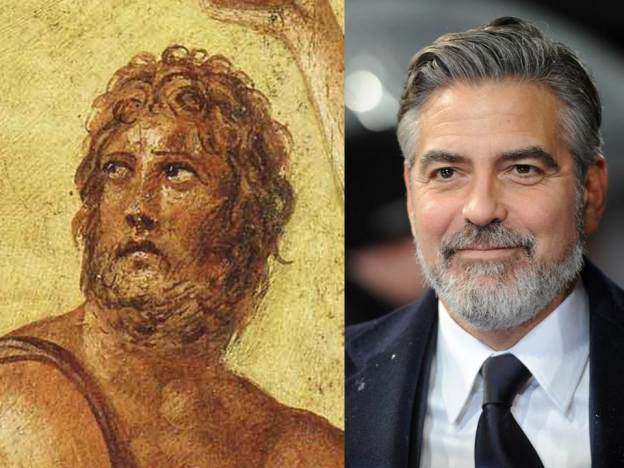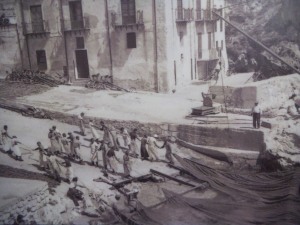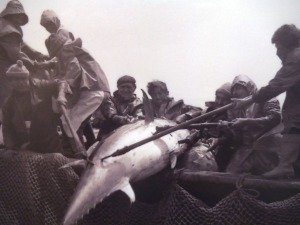 Heading further south along the Romantic Road, I make a quick stop in the small wine-making village of Rottingen but, rather unusually, it is not the wine I have stopped for. I’m searching for sundials along a 1,5 km route which winds its way through and around the village. There are 25 in total and even though I don’t manage to see them all, it is a pleasant stroll through the streets and the apple orchards which line the Tauber River.
Heading further south along the Romantic Road, I make a quick stop in the small wine-making village of Rottingen but, rather unusually, it is not the wine I have stopped for. I’m searching for sundials along a 1,5 km route which winds its way through and around the village. There are 25 in total and even though I don’t manage to see them all, it is a pleasant stroll through the streets and the apple orchards which line the Tauber River.

Rothenburg ob der Tauber is a fairy tale village filled with gingerbread houses and surrounded by towers and the inspiration for the village in Disney’s Pinocchio. It is also a tourist trap and prices are elevated accordingly. Even the Aire on the edge of town is €10 for the night and that doesn’t include water or electricity.
 My first view of the town is the Spitalbastei, a huge 16th century bastion. A Latin inscription above the gate reads, ‘Peace to those who enter. Farewell to those that leave.’ Having been formally welcomed to the town, I walk uphill to the Plonlien (little square) and copy thousands of previous visitors, and the guide books, by photographing a typical medieval house framed between two inner towers and gateways.
My first view of the town is the Spitalbastei, a huge 16th century bastion. A Latin inscription above the gate reads, ‘Peace to those who enter. Farewell to those that leave.’ Having been formally welcomed to the town, I walk uphill to the Plonlien (little square) and copy thousands of previous visitors, and the guide books, by photographing a typical medieval house framed between two inner towers and gateways.
 I eventually emerge into the main town square with a huge stone town hall and the gabled façade of the councillor’s drinking room which now houses the tourist office. Each hour, on the hour, two windows either side of the clock open to reveal figures who re-enact the ‘meistertrunk’. Legend says that the soldiers drank a magical brew before fighting the enemy in 1631 and saving the town.
I eventually emerge into the main town square with a huge stone town hall and the gabled façade of the councillor’s drinking room which now houses the tourist office. Each hour, on the hour, two windows either side of the clock open to reveal figures who re-enact the ‘meistertrunk’. Legend says that the soldiers drank a magical brew before fighting the enemy in 1631 and saving the town.
 I want to visit the gothic Jakobs Church which holds the marvellous carved wooden Alter of the Holy Blood. However, I don’t believe that we should pay to enter a place of worship so decide to spend my euros on a visit to the Christmas Museum instead, where I learn about the history of this festive period and the evolution of Christmas decorations which were previously made from cotton wool, paper, pewter, wood, wax and tragacanth (a type of resin). The museum is within a cavernous twinkling shop filled with thousands of tree decorations and sideboard ornaments as well as Swiss cuckoo clocks which seem a bit out of place.
I want to visit the gothic Jakobs Church which holds the marvellous carved wooden Alter of the Holy Blood. However, I don’t believe that we should pay to enter a place of worship so decide to spend my euros on a visit to the Christmas Museum instead, where I learn about the history of this festive period and the evolution of Christmas decorations which were previously made from cotton wool, paper, pewter, wood, wax and tragacanth (a type of resin). The museum is within a cavernous twinkling shop filled with thousands of tree decorations and sideboard ornaments as well as Swiss cuckoo clocks which seem a bit out of place.

 I have a hard time finding a reasonably priced place for lunch, made even more difficult by the fact that many restaurants have decided to close after a busy bank holiday weekend. In the end, I choose a tiny pub-like place where I warm up with a hearty meal of liver dumplings, boiled potatoes and the ubiquitous sauerkraut.
I have a hard time finding a reasonably priced place for lunch, made even more difficult by the fact that many restaurants have decided to close after a busy bank holiday weekend. In the end, I choose a tiny pub-like place where I warm up with a hearty meal of liver dumplings, boiled potatoes and the ubiquitous sauerkraut.

I compensate for my filling lunch by walking around the walls, looking for more photo opportunities. At the Burggarten (castle garden), I discover the tiny chapel of St Blasius, built in 1400 and now a dedicated war memorial. Unfortunately, what should be a marvellous view down into the Tauber Valley is blocked by thick foliage.
 On the way back to the motorhome, filled with Christmas spirit (even though it’s 82 days away), I stop at a bakery and buy a snowball. Schneeballen is a long strand of pastry dough, woven into a ball and deep fried. It is then coated in a number of ways; with chocolate, sugar or spices. I opt for a cinnamon spice snowball which goes very well with a hot vanilla latte at the end of a long day.
On the way back to the motorhome, filled with Christmas spirit (even though it’s 82 days away), I stop at a bakery and buy a snowball. Schneeballen is a long strand of pastry dough, woven into a ball and deep fried. It is then coated in a number of ways; with chocolate, sugar or spices. I opt for a cinnamon spice snowball which goes very well with a hot vanilla latte at the end of a long day.
40kms south is the walled-town of Dinkelsbuhl, equally as interesting as Rothenburg but with fewer tourists and without the associated price tag.
 Dominated by the 15th century St George’s Church, the town seems too small to justify the extremely tall nave which took 51 years to complete. There are 6 side alters, one of which is dedicated to St Sebastian whose clothed skeleton is interred in a glass case underneath.
Dominated by the 15th century St George’s Church, the town seems too small to justify the extremely tall nave which took 51 years to complete. There are 6 side alters, one of which is dedicated to St Sebastian whose clothed skeleton is interred in a glass case underneath.

Another hidden gem is the romantic courtyard of the Hezelhof. I discover it through an open gate which then locks behind me. Luckily I am able stroll through the reception of the hotel with a quick hello to the receptionist as I escape.

Like Rothenburg ob der Tauber, it is possible to walk a complete circuit of the town walls, studded with a variety of towers and bordered by several lakes and ponds. In a few weeks it will be the Fish Harvesting Festival featuring a market of regional products and fish specialities. I’m determined to try the local carp and so take lunch in the upmarket but inexpensive Hotel Sonne. My huge breaded carp fillet is served with a side of cucumber and potato salad and a mountain of mixed leaves. It’s delicious and relatively healthy compared to the rest of the menu.
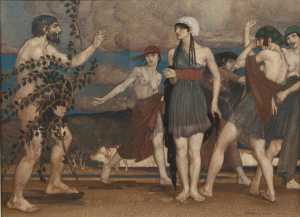 My path has crossed that of the mythical Odysseus several times already on this trip. The Nekromanteion in Greece is mentioned in Homer’s Odyssey, as is Nestor’s Palace in the Peloponnese where Telemachus sought help from the king while searching for his father Odysseus. In Sicily, the port of Aci Trezza is supposedly the site where Odysseus escaped from the cyclops Polyphemus and the picturesque islands in the harbour are said to be the rocks that the blinded cyclops threw after him.
My path has crossed that of the mythical Odysseus several times already on this trip. The Nekromanteion in Greece is mentioned in Homer’s Odyssey, as is Nestor’s Palace in the Peloponnese where Telemachus sought help from the king while searching for his father Odysseus. In Sicily, the port of Aci Trezza is supposedly the site where Odysseus escaped from the cyclops Polyphemus and the picturesque islands in the harbour are said to be the rocks that the blinded cyclops threw after him.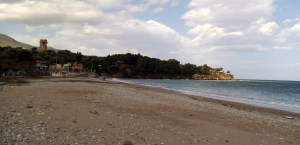 Now, I find myself having lunch in the Bay of Guidaloca, believed to be the place where Naisicaa found the shipwrecked Odysseus and helped him to set off on the final part of his return journey to Ithaca.
Now, I find myself having lunch in the Bay of Guidaloca, believed to be the place where Naisicaa found the shipwrecked Odysseus and helped him to set off on the final part of his return journey to Ithaca.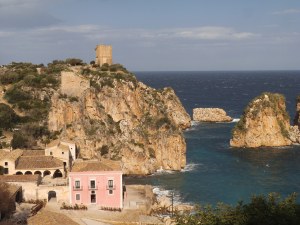 Not far away is the Tonnara di Scopello, an old tuna fishery set in an idyllic cove, guarded by ancient watchtowers built upon rocky columns. Since it closed down in the 1980s it has become a tourist attraction and was also used for the filming of ‘Ocean’s Twelve’ with George Clooney, Brad Pitt and Catherine Zeta Jones.
Not far away is the Tonnara di Scopello, an old tuna fishery set in an idyllic cove, guarded by ancient watchtowers built upon rocky columns. Since it closed down in the 1980s it has become a tourist attraction and was also used for the filming of ‘Ocean’s Twelve’ with George Clooney, Brad Pitt and Catherine Zeta Jones.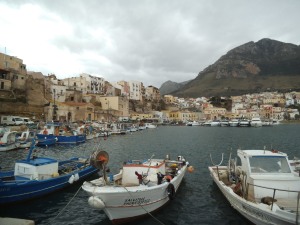 In Castellamare del Golfo, the largest of the local fishing ports along the coastline, I learn more about the tuna fishing industry in the Museum, which is housed in the Norman castle overlooking the harbour. I’m amazed at the size of the tuna fish shown in the black and white photos and wonder if any of the tuna are allowed to get that big these days due to overfishing.
In Castellamare del Golfo, the largest of the local fishing ports along the coastline, I learn more about the tuna fishing industry in the Museum, which is housed in the Norman castle overlooking the harbour. I’m amazed at the size of the tuna fish shown in the black and white photos and wonder if any of the tuna are allowed to get that big these days due to overfishing. 
